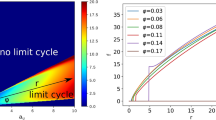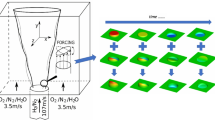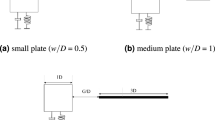Abstract
IN a recent paper by Egerton and Gates (Proc. Roy. Soc., A, 116, 516; 1927), reference is made to peculiarities exhibited by certain flame photographs (not reproduced) obtained, on a rapidly revolving film, when mixtures 1C2H2: 2·502: 10N2 were ignited at one end of a closed cylinder 19 cm. long and of 10·7 cm. internal diameter, as follows: “Some of the photographs show distinct closely-spaced bands, indicating that the combustion has a vibratory character. The number of vibrations per second in the after-flame is about 2500, and the spacing is consistent with the view that successive sound waves are reflected from the end-plates”.
This is a preview of subscription content, access via your institution
Access options
Subscribe to this journal
Receive 51 print issues and online access
$199.00 per year
only $3.90 per issue
Buy this article
- Purchase on SpringerLink
- Instant access to full article PDF
Prices may be subject to local taxes which are calculated during checkout
Similar content being viewed by others
Author information
Authors and Affiliations
Rights and permissions
About this article
Cite this article
MAXWELL, G., WHEELER, R. Striations in Explosive Flames. Nature 122, 995 (1928). https://doi.org/10.1038/122995a0
Issue date:
DOI: https://doi.org/10.1038/122995a0



